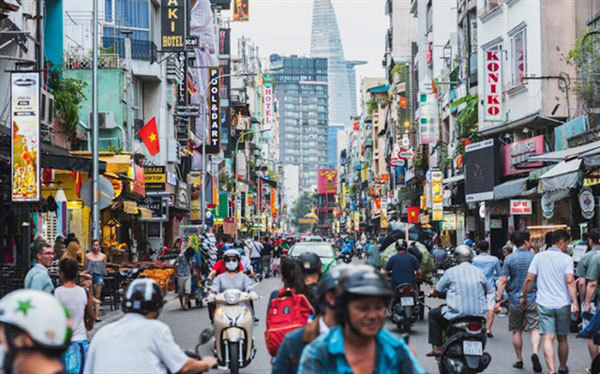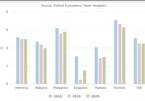 |
| The World Bank predicts that by 2026, 26 per cent of Vietnamese will be middle class, double the number today.— Photo tieudung.vn |
Better income has led to more attention on health among many Vietnamese. The World Bank predicts that by 2026, 26 per cent of Vietnamese will be middle class, double the number today. The average growth rate of the insurance market in Vietnam in 2012-2017 was 21.4 per cent, much higher than the Philippines (14.4 per cent) and China (14.4 per cent).
Along with expansion strategies, life insurance firms have entered a fierce race to increase charter capital to improve their financial strength to attract customers. Among 18 life insurers in Vietnam, Bao Viet Life is the only domestic firm.
This year, Manulife has increased its charter capital to nearly VND9.7 trillion (US$418.6 million), Hanwha Life Vietnam increased its charter capital to VND5 trillion ($215.7 million) from VND1.89 trillion ($81.5 million), Generali Vietnam injected additional capital, bringing the current charter capital to VND4.85 trillion ($209.3 million).
Compared to most of the mentioned foreign insurers, Bao Viet Life has lower charter capital of VND 4.15 trillion ($179 million).
In the field of newly exploited contracts, considered one of the most important categories for life insurers, Manulife leads with revenue from new customers of VND2.72 trillion ($17.3 million). Bao Viet Life was second with revenue of VND2.64 trillion ($113.9 million).
Notably, the number of newly exploited contracts via bancassurance in 2019 increased by 180 per cent year-on-year while the new premium revenue of this channel accounted for 17.8 per cent of the total newly exploited revenue of the entire market.
Lots of potentials
Despite spectacular growth in the past few years, according to experts, Vietnam's life insurance market remains relatively untapped.
Experts are upbeat about the Vietnamese insurance industry’s health in the coming years, forecasting it would maintain an annual double digit growth rate. The insurance industry expects a growth rate of 20 per cent this year.
The growth potential is great as the country has one of the world’s lowest life insurance penetration levels at less than 1 per cent of GDP. The average insurance premium in Vietnam stands at $30, much lower than the global average of $595 and Southeast Asia’s average of $74.
Data of the Vietnam Insurance Association showed 8 per cent of Vietnam’s population currently has life insurance. Though there is no updated data, the number of insurance contracts signed via bancassurance in the first half of last year grew by 89 per cent year-on-year, reaching nearly 857,000 contracts.
"The potential for further development is enormous, especially as the middle class continues to expand rapidly and awareness of risks such as increased cancer," said the CEO of a foreign insurance firm in the market.
Bloomberg reported on September 23, billionaire Richard Li's FWD Group Ltd. was nearing an agreement to pay about $400 million for the purchase of Vietcombank's Cardif Life Insurance.
There are also domestic insurers which have launched life insurance products like Bao Minh or PVI however, a report of Rong Viet Securities Company said: “The products of domestic companies are relatively similar. Foreign companies, thanks to their ability to provide differentiated products with better profitability, are targeting the Vietnamese market. There, the direction to buy shares of domestic firms is the fastest way to penetrate the young and highly competitive Vietnamese market."
VNS

Uneven path forecast for VN economy next year: expert
Vietnam’s economy has recorded notable achievements year to date. However, maintaining the country’s economic growth momentum may be challenging next year, according to economic expert Vo Tri Thanh.

Vietnam’s GDP growing well despite global tensions
Vietnam is predicted to obtain the highest GDP growth rate in the region, but it is exposed to risks from the effects of global economic tensions.
 Growing demand for health care and disease prevention in Vietnam offers great opportunities for life insurers, especially foreign firms, to develop.
Growing demand for health care and disease prevention in Vietnam offers great opportunities for life insurers, especially foreign firms, to develop.